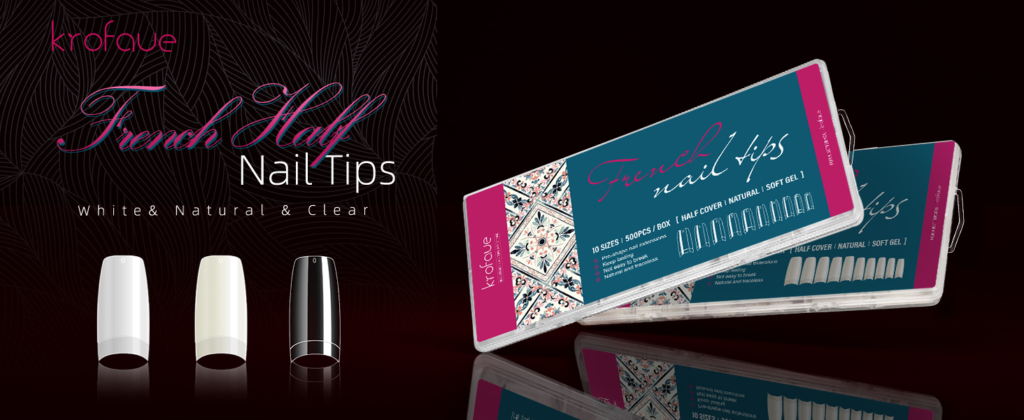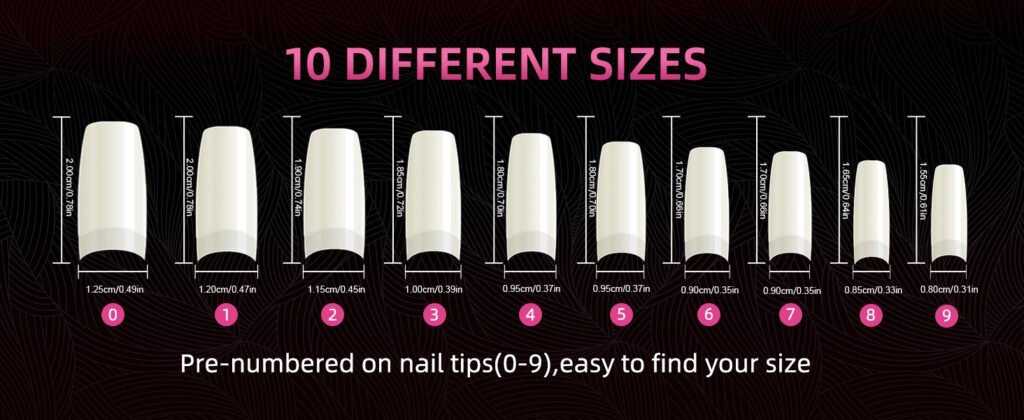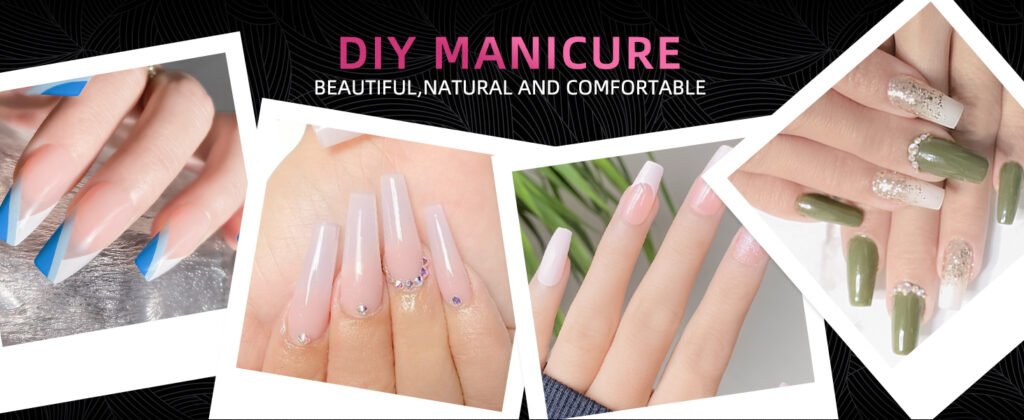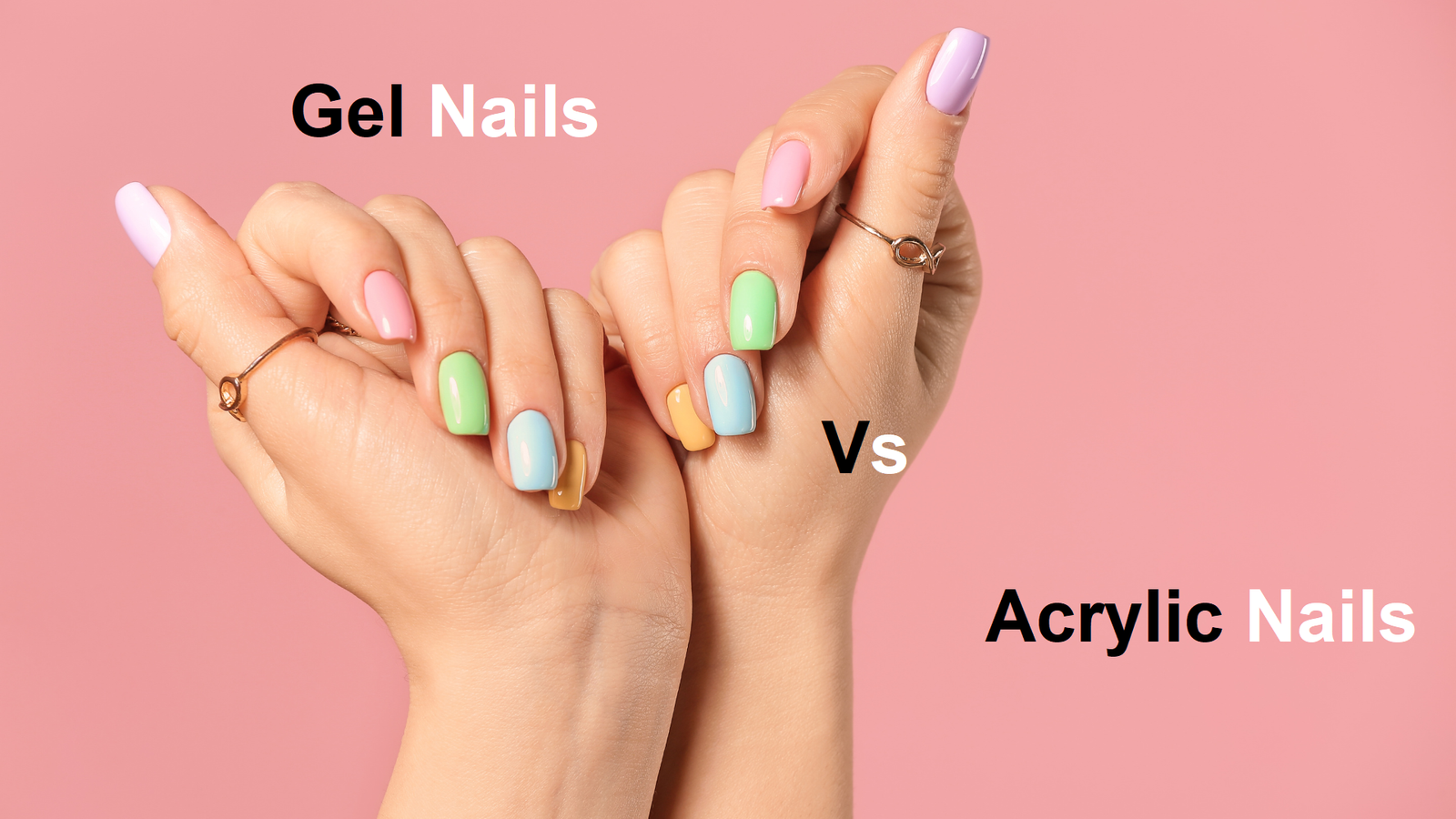Gel Nails vs. Acrylic Nails: Which One is Right for You? Discover the differences between gel nails and acrylic nails in this comprehensive guide. Explore their application methods, benefits, and drawbacks to make an informed choice for your nail enhancements. Learn how to maintain healthy nails while enjoying stylish manicures tailored to your lifestyle. Whether you seek durability, natural appearance, or customizability, our article covers essential insights into choosing the right option for you. Prioritize nail health and aesthetics with expert advice on gel vs acrylic nails.
Introduction to Nail Enhancements
Nail enhancements have surged in popularity over the past few decades, becoming a significant aspect of personal grooming and self-expression. With an increasing number of individuals seeking stylish, long-lasting options for manicures, the beauty industry has responded with a variety of techniques and products. Among these, gel nails and acrylic nails have emerged as two of the most prominent choices for consumers looking to enhance the appearance and durability of their natural nails.
The appeal of nail enhancements lies not only in their aesthetic value but also in their ability to provide durability and versatility. Many individuals desire nails that can withstand daily activities while maintaining a polished look. Gel nails, known for their glossy finish and natural appearance, are created using a special gel formula that is cured under a UV or LED lamp. They offer a range of colors and designs, making them a popular choice for those who prefer a more understated elegance. On the other hand, acrylic nails are constructed using a mixture of liquid monomer and powder polymer, forming a hard, protective layer over the natural nail. This method allows for greater sculpting and customizability in nail design, appealing to those wishing for more dramatic styles.
As the desire for nail enhancements grows, consumers are increasingly faced with decisions regarding which option best suits their lifestyle and aesthetic preferences. Gel nails vs acrylic nails each present unique benefits and considerations, thereby establishing a foundational context for individuals to evaluate their options. By understanding the various characteristics and functionalities of these two popular methods, potential clients can make informed choices about their nail care, leading to a heightened sense of satisfaction with their final results.
What are Gel Nails?
Gel nails are a popular alternative to traditional nail enhancements, characterized by their flexible and natural appearance. Generally, gel nails consist of a blend of synthetic polymers and resins that create a durable coating on the natural nail. Unlike acrylic nails, which are made from a powdered polymer mixed with a liquid monomer, gel nails are applied using a thicker gel substance that is cured with UV or LED light. This curing process solidifies the gel, resulting in a glossy finish that closely resembles natural nails.
The application of gel nails begins with the preparation of the natural nail. A nail technician will clean and buff the nails to remove any oils or imperfections. A base coat of gel is then applied, followed by layers of colored gel, which may also be enhanced with various designs or techniques. Each layer is cured under UV or LED light, ensuring that it hardens properly. Finally, a top coat is applied to provide extra shine and protection, also requiring curing. This process can yield beautifully polished nails that can last several weeks with proper care.
One of the key advantages of gel nails is their flexibility. They are less prone to chipping or breaking compared to acrylic nails, making them suitable for individuals with active lifestyles. Additionally, the appearance of gel nails is often more natural, which appeals to many clients. However, there are potential downsides to consider. The removal of gel nails requires soaking in acetone, which can be time-consuming, and excessive use may weaken the natural nail beneath. Furthermore, the curing process necessitates exposure to UV light, which some may find concerning. Overall, gel nails provide a durable and aesthetically pleasing option, contrasting with acrylic nails in both application and finish.
What are Acrylic Nails?

Acrylic nails are a popular option among those seeking to lengthen and enhance their natural nails. This method involves a combination of a liquid monomer and a powder polymer, which are mixed together to create a durable and strong nail extension. The application process typically begins with a thorough cleaning and preparation of the natural nails, followed by the application of a nail form or tip. The acrylic mixture is then carefully sculpted over the form or attached tip to achieve the desired shape and length.

One of the primary advantages of acrylic nails is their exceptional durability. They are resistant to chipping and splitting, making them ideal for individuals with an active lifestyle. Additionally, acrylic nails can be shaped and filled in various styles, allowing for a high degree of customization. Whether one prefers a classic square or an elegant stiletto shape, acrylic nails can accommodate almost any desired form. The longevity of acrylics is another appealing factor; when properly applied and maintained, they can last for several weeks before requiring a fill.

However, there are also potential downsides to consider. Acrylic nails can be prone to lifting, particularly if not applied correctly or if the natural nails are not adequately prepared. Additionally, while the durability of acrylic nails is a significant benefit, it can also lead to breakage if subjected to excessive force. The removal process can also be more intricate than that of gel nails, often requiring soaking in acetone, which may weaken the natural nail over time. It’s important for individuals to weigh these pros and cons before choosing acrylic nails over other options, such as gel nails, tailoring their decision to their lifestyle and nail care preferences.


Differences Between Gel Nails and Acrylic Nails
When comparing gel nails vs acrylic nails, several essential factors distinguish these two popular nail enhancement options. The application techniques are one of the primary differences. Gel nails are often applied using a brush-on formula, which is cured under UV or LED light to achieve a durable finish. In contrast, acrylic nails are created by mixing a liquid monomer with a powder polymer, which then hardens into a solid form when exposed to air. This fundamental difference in application results in varying textures and appearances for each type of enhancement.
Regarding aesthetics, gel nails provide a glossy finish that mimics the natural shine of healthy nails. Their flexibility contributes to a more natural look and feel, whereas acrylic nails can appear thicker and may involve more visible layering, leading to a less natural appearance. Both types can be customized with various colors and designs, yet the underlying characteristics affect how they are perceived.
Durability also plays a crucial role in the gel nails vs acrylic nails debate. Gel nails are generally more resistant to chipping and scratching due to their flexible nature. On the other hand, acrylic nails can be more robust and less prone to breaking under impact, making them suitable for individuals with a more active lifestyle.
The removal processes for gel and acrylic nails further illustrate their differences. Gel nails typically require soaking in acetone and gently filing them off, allowing for a less damaging removal. In contrast, acrylic nails may necessitate a more aggressive filing technique, which could risk damage to the natural nail if not performed carefully. Understanding these distinctions can guide individuals in selecting the appropriate nail enhancement option that aligns with their preferences and lifestyle.
Health Considerations: Safety and Damage
When embarking on the journey of enhancing your nails, it is essential to consider the health implications associated with both gel nails and acrylic nails. Both options, while popular, come with their own set of potential risks and side effects that should be taken into account. One of the primary concerns with these nail enhancements is the possibility of allergic reactions. Individuals may develop sensitivities to the chemicals used in the formulations, resulting in symptoms like redness, itching, or even severe skin reactions. It is advisable to conduct a patch test prior to full application to ensure compatibility with the product.
In addition to allergic responses, both gel nails and acrylic nails have the potential to cause damage to the natural nail underneath if not applied or removed correctly. Gel nails, which are cured under UV light, can weaken the structure of the natural nail through prolonged use. Similarly, acrylic nails, which involve a mixture of liquid and powder, can lead to thinning and brittleness if applied inappropriately. Proper application by a skilled technician is crucial to minimize damage and maintain nail health over time.
Equally important is the method of removal. Both gel nails vs acrylic nails require careful techniques to avoid tearing or lifting the natural nail. It is highly recommended that individuals seek out a professional nail technician for both application and removal processes. DIY approaches might save time or money but could result in significant long-term damage. Regular maintenance and following proper aftercare can make a substantial difference in preserving the integrity of your nails, so prioritizing health is imperative when opting for either gel or acrylic enhancements. Choosing wisely can lead to beautiful nails without compromising your natural nail health.
Cost Analysis: Gel vs. Acrylic
When deciding between gel nails and acrylic nails, understanding the cost implications is crucial. The price of both nail types can vary significantly based on several factors including location, salon reputation, and the experience of the nail technician. Generally, gel nails tend to be slightly more expensive than acrylic options; this is due to the higher quality materials used and the specialized application process required for gel. However, the pricing can fluctuate greatly, with some salons charging a premium for their services due to their expertise and the luxury experience they provide.
In terms of maintenance, both gel and acrylic nails require regular upkeep. Gel nails often necessitate fills every two to three weeks, while acrylic nails may need fills every three to four weeks. The frequency of these maintenance sessions can influence the overall cost in the long run. Furthermore, typically, gel nails help to prevent chipping more effectively than acrylics, potentially reducing the need for frequent replacements or repairs, which can offset some of the initial expense.
Long-term financial considerations also play a significant role in determining which option is more economical. While gel nails may require a higher upfront investment, their durability can lead to lower costs over time due to less frequent maintenance. Conversely, acrylic nails may appear more budget-friendly initially but can accumulate expenses with their more frequent filling and potential damage that may require full replacements. Prospective clients should weigh their initial budget against long-term maintenance costs when deciding between gel nails vs. acrylic nails, as these choices can impact both aesthetics and finances. Ultimately, making an informed decision will lead to a more satisfying outcome regarding nail care and personal preference.
Maintenance and Longevity of Gel and Acrylic Nails
When it comes to nail enhancements, understanding the maintenance and longevity of gel nails vs acrylic nails is paramount for anyone considering these options. Each type of nail design requires a specific level of care to ensure that they not only look their best but also remain intact for as long as possible.
Gel nails, known for their natural appearance and flexibility, typically last between two to three weeks before they begin to show signs of growth and require a fill-in. Maintenance primarily involves regular touch-ups to address this growth and any chips that might occur. A key advantage of gel nails is their curing process under a UV or LED light, which helps them maintain stability during everyday activities. While gel nails can be less prone to chipping compared to their acrylic counterparts, they still require gentle handling to prolong their lifespan.
Acrylic nails, on the other hand, are renowned for their durability and can last anywhere from three to six weeks, depending on how well they are maintained and the growth of the natural nail. The upkeep involves regular trips to the salon for fills, generally every two to three weeks, to manage the gap created as the natural nails grow. Although acrylic nails are more resilient, they can become susceptible to lifting and chipping if proper aftercare is neglected. It’s essential to follow a regimen that includes avoiding excessive moisture and using filing techniques that do not compromise the nail structure.
Both gel and acrylic nails necessitate a certain level of upkeep. Regularly reapplying the coats and ensuring the nails are kept hydrated will help maintain their aesthetic appeal and longevity. In conclusion, choosing between gel nails and acrylic nails largely comes down to personal preference regarding maintenance requirements and desired longevity. Proper care will enhance the overall experience of either nail type.
Who Should Choose Gel Nails and Who Should Choose Acrylic Nails?
When considering the choice between gel nails vs acrylic nails, personal preferences and lifestyle play crucial roles in determining which option is more suitable. Gel nails are often favored by individuals seeking a natural appearance and flexibility. They tend to have a lighter structure, which can make them more comfortable for daily wear. Moreover, gel nails provide a glossy finish and maintain their shine over time, making them ideal for those who enjoy a polished look without frequent touch-ups.
Individuals who lead active lifestyles or work in environments where their hands are frequently engaged in manual tasks may lean towards acrylic nails. Characterized by their durability, acrylic nails offer added strength and protection for natural nails, which can be particularly beneficial for those prone to breakage. Acrylics can withstand more wear and tear, making them a practical choice for people who require robustness and longevity in their nail enhancements.
For those who prioritize low-maintenance beauty routines, gel nails might be the better option. They generally require less filing and can be filled rather than completely replaced after growth, providing a smoother, more manageable experience. Conversely, clients who anticipate changing their nail design frequently or who prefer a more dramatic style may find acrylics more appealing due to their versatility in shapes and lengths. Additionally, acrylics can support elaborate nail art without compromising sturdiness.
Ultimately, the decision between gel nails vs acrylic nails should reflect individual needs and preferences. By evaluating lifestyle factors, maintenance levels, and aesthetic desires, anyone can make an informed choice that aligns with their personal style and nail care requirements.
Conclusion: Making the Right Choice for Your Nails
As we have explored throughout this blog post, choosing between gel nails and acrylic nails involves examining several key factors. Both options have their distinct advantages and drawbacks, making the decision highly personal, influenced by individual preferences, lifestyle considerations, and nail health.
Gel nails are known for providing a more natural look and feel. They are flexible, tend to be thinner than acrylics, and often have a high-gloss finish that many find appealing. This option is popular among individuals seeking a more lightweight alternative and who may prefer a quicker application process. Additionally, gel nails tend to last longer without chipping, making them a favored choice for those who require durability. However, it is crucial to note that the removal process for gel nails can be more intricate, often requiring professional assistance.
On the other hand, acrylic nails offer a robust solution with the ability to create various shapes and designs. They excel in strength and are particularly suited for those who may be prone to nail breakage. Acrylics can be an excellent choice for individuals who frequently engage in activities that may put their nails at risk. Yet, potential downsides include a thicker appearance compared to gels and the need for maintenance to ensure their longevity and aesthetic appeal. It is essential for clients to understand that improper application or removal may lead to damage to the natural nails.
In conclusion, when deciding between gel nails vs acrylic nails, one must consider factors such as personal style, nail health, and how much time you are willing to invest in maintenance and upkeep. Identifying a reputable nail technician who understands your preferences will also contribute significantly to achieving the desired results and ensuring that your nails remain healthy amidst your chosen enhancement. Ultimately, the best option for you will align with your lifestyle and how you value the health and aesthetics of your nails.
FAQs
Are gel nails better or acrylic?
Gel nails are generally more durable because they’re more flexible and less brittle than acrylics.
What lasts longer, gel or acrylic?
If you’re looking for the most durable option possible, acrylic nails are the way to go.
What is the healthiest nail option?
Choose soak-off gel nails instead of acrylic nails.

